Vila do Nordeste, with almost 1341 inhabitants, is the main parish of the council of Nordeste with the most relevant architectural heritage.
The centenary bridge of Sete Arcos, the main church of São Jorge, the lighthouse of Arnel (the first to be built in the Azores) and several old dwellings constitute an invaluable estate.
The parish was designated as parish by D. Manuel I, on the 18 June, 1514. Situated on a hill, it was named after Salvador Afonso, an attorney of the island that probably owned vast tracts of land.
Pedreira or “quarry” was so called because it supplied stone for the constructions of various buildings in the area.
Early chroniclers do not mention this location, which suggests that it had long been composed by virgin fields and slowly populated over the years.
Regarding walking trails, an old path runs through large tracts of vineyards. To this day, a number of old houses are still used as support for the growing of vines, whilst others, more recently built, are used as summer homes. The trail begins behind the Church of Nossa Senhora da Luz, in Pedreira, and continues towards Fajã do Araújo.
What to see in Vila do Nordeste:
* Church of São Jorge
Located in the town center, next to City Hall, in Nordeste, this church is the most important and beautiful church in the county. It was built in 1796, date inscribed on the front, and inside one will find pictures of the extinct franciscan convent from 1642 and a cinquecentist image of the saint patron, São Jorge.
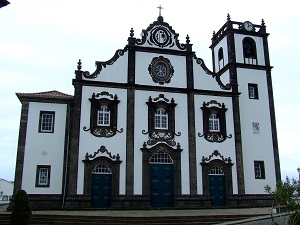
* Chapel of Nossa Senhora da Mãe de Deus
This hermitage was ordered in the 16th century by John Smith, who wished to be buried there. Located on the Regional Road to Pedreira, it is currently in ruins, with only the side walls and the cross stand.

*Chapel of Nossa Senhora do Rosário
Chapel built in 1529, and restaured in 1848. Located in Nordeste, near the cemetery of the parish, on Rua do Rosário.
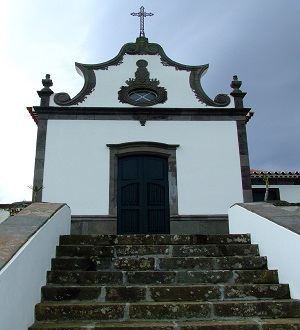
* Chapel of Nossa Senhora da Nazaré
Chapel located in Lugar da Nazaré, along the Regional Road. It was reconstructed in 1852, date inscribed on the façade.

* Triato of Holy Spirit
“Triatos of the Holy Spirit” are constructions associated with the festivities in honor of the Holy Spirit, intended to display the symbols of the Holy Spirit, including the royal crown surmounted by a dove, flag, scepter, traditional masts. They are built in a rectangular one floor plan. There are two triatos on Vila do Nordeste:
1. Located on Gaveto form Rua do Topo with Rua d'Alem. The façade is inscribed with "19ES37". The structure is topped by a symbol of the Holy Spirit, the crown.
2. Located in Largo da Grota do Bravo. It was built in 2011 by the Parish Council of Nordeste. It is surmounted by the crown of the Holy Spirit, crafted in basaltic rock (stone tillage).
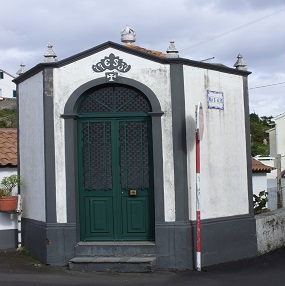
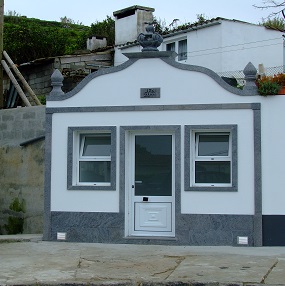
* Fountains
The fountains played a very important role in people's daily life. In a not too distant past, there were no sources of tap water to supply several localities There are three fountains in Vila do Nordeste:
1. Located in Ponta do Arnel, nex to the lighthouse. The basin is crafted on basaltic rock. The black volcanic stone (basalt) contrasts with the whitewash center.
2. Located in Largo Rodrigo Gamboa. It has two ornated side benches in basaltic rock.
3. Located on Rua Padre José Pacheco do Monte, inserted into a wall. The façade bears the inscriptions "19 6/2 08" and "C.M".


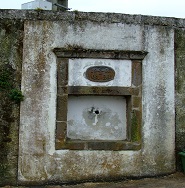
* Bandstand
The bandstand is used to shelter music bands during concerts, festivals and other events. It is a symbol of celebration and remains, to this day, an important stage for performances to many communities. It is located in the Garden of Largo in the historical centre of Vila do Nordeste. It has access stairs and on the top of the roof an ornamental musical symbol.

* Lighthouse of Ponta do Arnel
The lighthouse is located in Nazaré and was the first to be built in the Azores, in the second half of the 19th century, opened in 1876. It lies about 70m above sea level and works as an aid to maritime and air navigation.
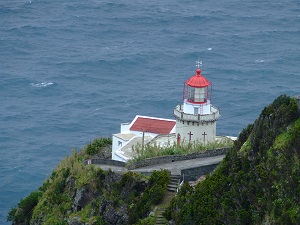
* Watermills Classified as Public Interest
It is a property of very old building, probably hundreds of years old that existed for livelihoods of people who took advantage of the slope of the river with good flow to build their mills having functions of property and mill simultaneously. It is housed in a green area with water cascades, that turn the garden a very pleasant and enjoyed by locals and tourism. One of the watermills is used for tourism purposes, usind to rent to visitors.
The other mill was partially destroyed by the floods of September 1986, and the water conducts disappeared. Nowadays, it is totally recovered, inserted in a large green area with water falls, illustrating to visitors how a water mill with castor works.


* Lime Kiln
It was, for a long time, a very important economic instrument for commercial and industrial development. A ladder gives access to the upper mouth of the chimney, with 3 feet in diameter. Although currently in ruins, the structure still presents high ethnographic interest.

* Bridge of Sete Arcos
Bridge dating back to 1883, as inscribed on one of the curbs. The iron railing was placed in 1884. With Romanesque features, it is one of the most beautiful and impressive bridges of São Miguel, with seven arches in stonework, about 122m in length, 8m in diameter and 13m in height. At the time, it was baptized “viaduct”.
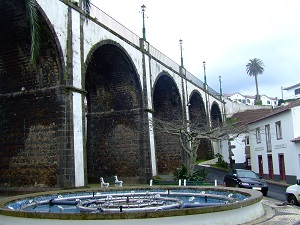
* City Hall
Built in the central area of Vila do Nordeste, replacing the former small building that served as City Hall. It constitutes one of the most important constructions of the county in terms of 19th century civil architecture. It was built in 1875 and stands out for its size and the overall regularity and symmetry of the façade.

* Viewpoint of Ponta do Arnel
Located in Nazaré, it allows one to admire the beautiful lighthouse of Ponta do Arnel and part of the coast.
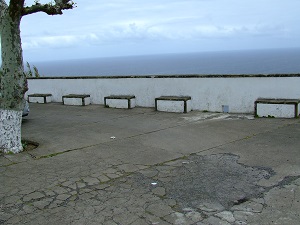
* Viewpoint of Boca da Ribeira
Admire the pool of Foz da Ribeira do Guilherme and the camping park.
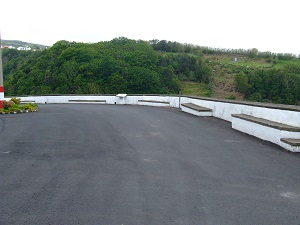
* Garden of Viaduto
Located in Largo da Ponte, this pleasant garden offers flowerbeds, a fountain, benches and trees to provide shade. Next to the garden, lies the centennial bridge of Sete Arcos, one of the most imposing of the Azores.
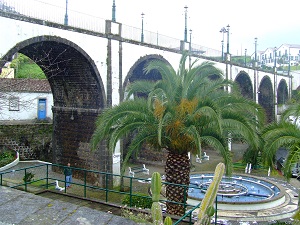
* Garden of the Historic Town Centre of Nordeste
Modest garden, located on Rua Francisco Raposo Oliveira, with a bandstand in the center, cobblestone paths, flowerbeds, benches and trees to provide shade.
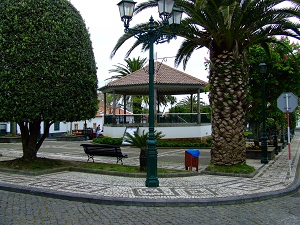
* Recreational Forest Reserve of Fajã do Rodrigo
The Recreational Forest Reserve of Fajã Rodrigo covers about 1,40ha. It is inserted in the SPA "Pico da Vara/Ribeira do Guilherme" and plays an important role in the development of environmental education and awareness actions, particularly in relation to the Azores Bullfinch (Pyrrhula murine) - an endemic bird of the island of São Miguel. Situated along Ribeira do Guilherme, it has unique and attractive characteristics, among which, the great diversity of species.
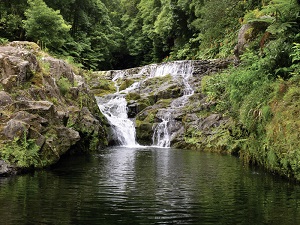
* Forest Reserve of Playground of Viveiro do Nordeste
Near the historic center of Nordeste, the forest reserve is equipped with physical maintenance equipment and a picnic area with traditional wood ovens. It features an extensive area of forest nurseries, divided by ranges of azaleas. The largest nursery intended to the recovery of Azorean natural habitats through the production of Azorean endemic species, along with other native species.

* Picnic Park of the Forest Reserve of Playground of Viveiro do Nordeste
Located inside the Playground Nursery Nordeste Forest Reserve. It features inside in traditional wood ovéns.
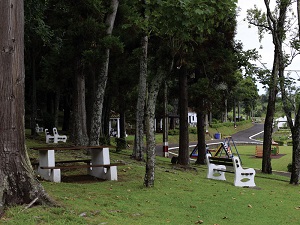
* Municipal Camping Park of Nordeste
Camping Park, located in the area known as Feira, set among lush vegetation, next to a stream - Ribeira do Guilherme. These conditions make this park the most popular on the island. It is equipped with tables, haystacks , grills, showers with hot water, electricity (from solar panels) and a playground.

* Small harbor of Nordeste
Located in Ponta do Arnel, it was built by order of King D. João III. Through the years, it was repeatedly destroyed by the sea and repaired, the last major reconstruction having occurred in 1875. It is mainly intended to fishing activity. It has paved access, a berth in stone with about 30m long, a ramp of beaching, also in stone and port access. The parking of boats is carried over access.
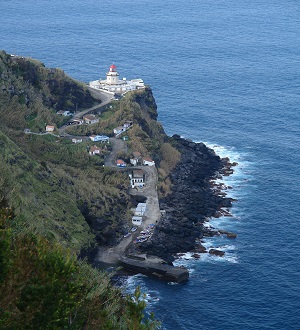
* Municipal Museum of Nordeste
The Ethnographic museum opened in 1989, as part of the celebrations for the 475 years of the creation of the county. It consists of traditional objects of agricultural life, traditional cuisine with dishes employed in "nordestense table", pottery of Vila Franca do Campo, dishes of the Lagoa, traditional costumes, loom and linen work, tiles and a section of sacred art.

* Workhouse of Nordeste
It is the largest and most representative of the kind in São Miguel, where are taught traditional crafts such as embroidery, rug, quilts, handloom wool blankets, linen and patchwork. For example, the costumes of the island’s folklore are made here. It was founded by Maria do Carmo Monte, who intended to instruct local youth, by the recovery of traditional handlooms, handicrafts, sewing, embroidery and needlework.

* Tourist Office and Craft of Nordeste
Located on Rua D. Maria do Rosário, the office insures the promotion of tourism and crafts from local artisans.

What to see in Pedreira:
* Church of Nossa Senhora da Luz
The former and original temple was probably built in the early 18th century. Nevertheless, in the 19th century, the village of Pedreira was in need of a new and larger temple, which was completed in 1872 - date inscribed on the façade - with three naves and simple altars. This temple is dedicated to Nossa Senhora da Luz..

* Triato of the Holy Spirit
“Triatos of the Holy Spirit” are constructions associated with the festivities in honor of the Holy Spirit, intended to display the symbols of the Holy Spirit, including the royal crown surmounted by a dove, flag, scepter, traditional masts. They are built in a rectangular one floor plan. In Pedreira there are two Triatos:
1. Located on Rua do Rebentão . The façade bears a star-shaped and embossed cartouche, the date of construction (1925) in the centre, as well as letters and digits (S. E. S. 3.3) around the points of the star. The structure is surmounted by a symbol of the Holy Spirit, a dove with outstretched wings.
2. Located on Rua do Cinzeiro. The façade bears the inscriptions "SE "and "19 6/5 20" and is topped by one of the symbols of the Holy Spirit, the crown, crafted in basaltic rock.
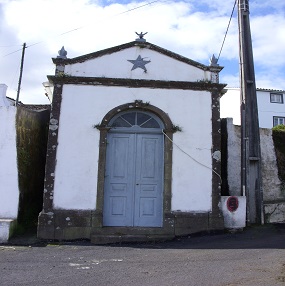

* Fountains
The fountains played a very important role in people's daily life. In a not too distant past, there were no sources of tap water to supply several localities. In Pedreira there are seven fountains:
1. Located in Caminho do Moio . This structure is inserted into a wall. It is white with a small recessed basaltic rock basin.
2. Located on Rua da Lomba, it is inserted into a wall. This entire structure is carved in basaltic rock.
3. Located on Rua da Igreja, next to the garden of the parish. Arc structure.
4. Located on Rua do Rebentão. The spout has the shape of a lily.
5. Located on Rua do Rebentão. Bears the inscriptions "CMA and "1954" on the façade.
6. Located on Rua do Cinzeiro. It is white with a gray frame and a basalt basin. The façade bears the inscriptions "19 20/6 79".
7. Located on Rua do Cinzeiro. The façade bears the inscriptions "1954" and "CMN".


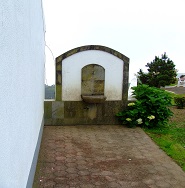
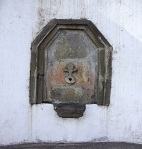
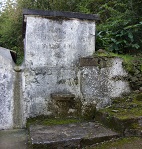
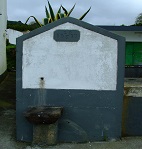

* Bandstand
The bandstand is used to shelter music bands during concerts, festivals and other events. It is a symbol of celebration and remains, to this day, an important stage for performances to many communities. It is located on Rua da Igreja, in the center of the garden, ornamented with flowers, trees and benches. Presents a tiled roof and stair access.

* Oldf sinks
The sinks or washing tanks are vestiges of the past. When the urbanization intensified, cities built public sinks for people without great possessions, so that they didn’t had to walk to the streams. Located on Rua do Cinzeiro, currently out of use.

* Viewpoint of Ponta da Madrugada
Located next to the Regional Road, on the edge of the island, it is the best place to watch the sunrise. It offers a breathtaking view to the sea and to Serra da Tronqueira. It offers tables and grills for friendly barbecues on summer afternoons.
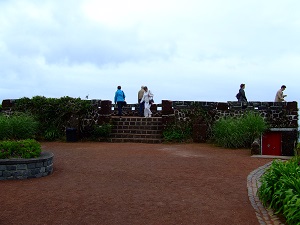
* Viewpoint of Ponta do Sossego
IThe most emblematic sight of Nordeste. It offers a magnificent view over the sea and the beach of Lombo Gordo. It has a vast garden area filled with flowers in the warmer months and a picnic area. It is a leisure place of excellence, perfect to spend the entire evening contemplating the landscape.

* Viewpoint of Pico do Bartolomeu
Located on Pico do Bartolomeu, at 887m, it offers superb views over Lomba da Povoação and Lomba das Furnas, as well as of native altitude vegetation - the Azores Laurel Forest.
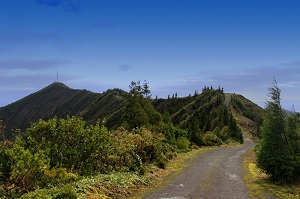
* Viewpoint of Serra da Tronqueira
This viewpoint is in the heart of the Priolo, or Azores Bullfinch, Habitat and around it, you can contemplate the most important area of Laurel Forest on the island. It also offers an imposing view of Serra da Tronqueira, Pico da Vara - the highest peak on the island of São Miguel - and Pico Verde.

* Viewpoint of Vista dos Barcos
Situated between Pedreira and the town of Nordeste. It opens to the sea, the Lighthouse of Arnel (the oldest lighthouse of the Azores) and the harbor of Nordeste.

* Public Garden of Rua Nova
Located on Rua Nova, it is a modest green space with landscaped flowerbeds and benches.
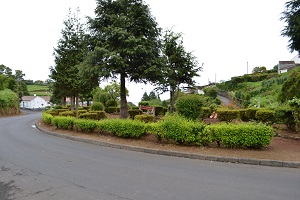
* Recreational Forest Reserve of Cancela do Cinzeiro
The park encloses approximately 10ha and is surrounded by an extensive area of Japanese Cedar (Cryptomeria japonica) to the north and protected by curtains under pasture to the south. It exists since 1960 and was refurbished 2001. It is equipped with a covered picnics area, playground, an endemic area, fitness and walking trails along the beautiful natural forest. In the vicinity of the reserve there is a nature reserve with samples of the endemic species of the region.
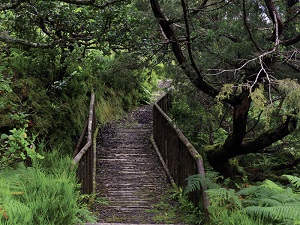
* Picnic park of the Recreational Forest Reserve of Cancela do Cinzeiro
Recreational Forest Reserve of Cancela do Cinzeiro is an indoor picnic area and includes a rustic golf area.

* Picnic park of viewpoint of Ponta do Sossego
Located in the Viewpoint of Ponta do Sossego, this enjoyable picnic area provides grills, sheltered tables and stone benches, as well as restrooms and selective waste containers.

* Picnic park of Viewpoint of Ponta da Madrugada
Located in the Viewpoint of Ponta da Madrugada, it is a place of great natural beauty and rich vegetation. The picnic area provides sheltered tables and benches in stone.
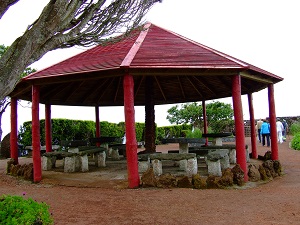
* Picnic park of Viewpoint of Estrada Regional da Pedreira
Located along the Regional Road, this green area is equipped with grills, tables and benches in stone.
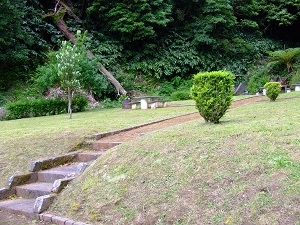
* Beach ofLombo Gordo
Located at the base of a very steep slope. The beach is strongly influenced by sea currents, which leads to variable sand settlements with a periodicity of 7 years, being either very extensive, either reduced to almost half its length. This is a very secluded and unfrequented spot, where one can enjoy the silence while contemplating the sea or admiring the sunrise. Because of its orientation, this beach only gets morning sun.
It has restrooms and car parking.

* Interpretation Center of Priolo
The Environmental Center of Priolo is an interpretation center developed by the Portuguese Society for the Study of Birds, in partnership with the Regional Secretary for Natural Resources and Regional Directorate of Forest Resources, under the LIFE Priolo project. This center seeks to contribute to the knowledge of the Azores Bullfinch and the preservation of its habitat, the laurel forest, as well as to conservation actions carried out under the project Life Priolo, Life Sustainable Laurel Forest and, more recently, the project Life Terras do Priolo, for the conservation of this bird species and its habitat.
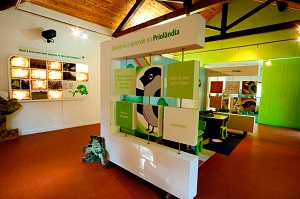
< Previous page